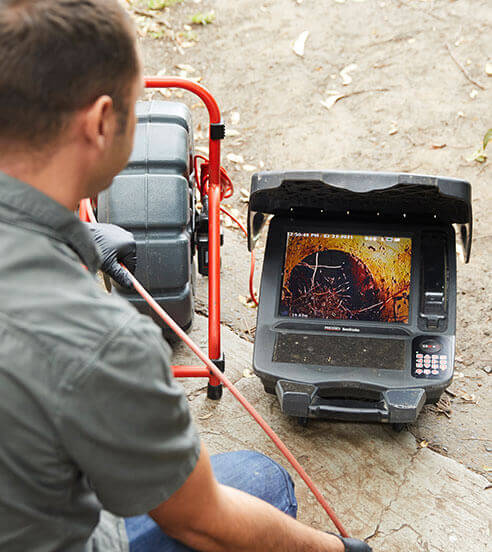Drain problems are the very definition of inconvenience: disruptive to your day-to-day routine, yet often tricky to pinpoint and fix. Even worse, ignoring small plumbing issues can quickly escalate into a costly and messy disaster. We see it happen time and time again, and over the years, we’ve helped countless Sydney homeowners and property managers diagnose and fix blocked drains before things get out of hand.
Noticing a few red flags? That’s your first clue to take action. This guide covers everything you need to know about blocked drains and how to fix them before they turn into a costly headache.
What Are the Early Signs of a Blocked Drain?
Blocked drains don’t happen overnight. More like a marathon than a sprint, they build up slowly, but give you warning signs along the way. Knowing these and catching them early can save you time, money, and a serious mess.
1. Slow Drainage System
Whether it’s the kitchen sink or the shower, water that takes longer than usual to disappear is often caused by a gradual buildup of grease, food scraps, hair, or soap scum. In bathrooms, hair and hardened soap can narrow pipe flow. While in kitchens, cooking oils are the main culprits, which solidify and cling to pipe walls.
While hot water flushing may offer temporary relief, recurring slow drains are telling you it’s time to call in a professional plumber for a proper inspection and long-term solution.
2. Unpleasant Odours
Foul odours are often an early warning sign of bacteria buildup, stagnant water, or decomposing organic matter lurking inside your pipes. Even if water seems to be flowing normally, the smell suggests a deeper issue.
Other possible culprits include mould, blocked vent pipes, tree root intrusion, or even minor sewage leaks.
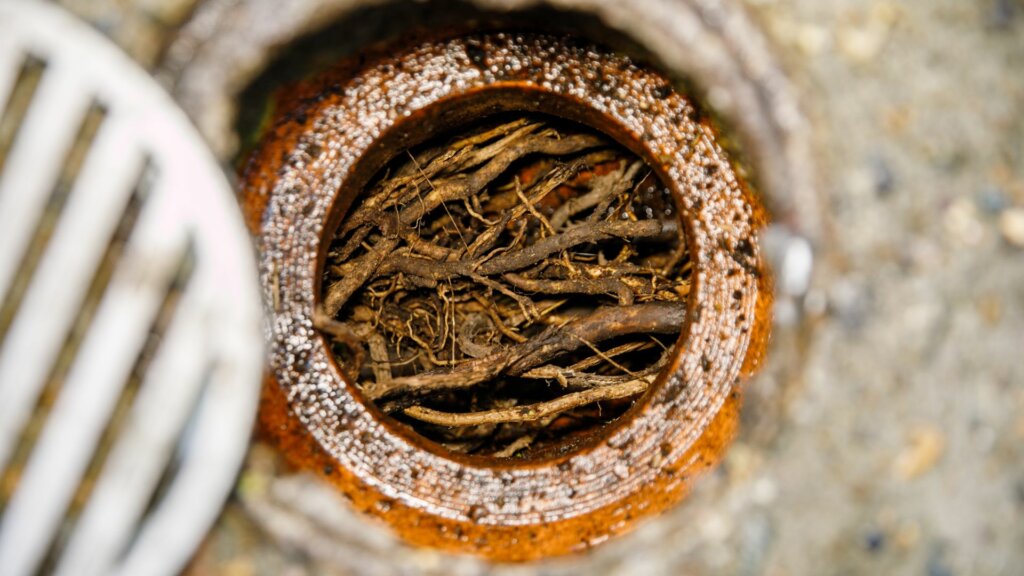
For a quick DIY fix:
- Boil water or white vinegar.
- Pour half down the affected drain.
- Wait a few minutes, then follow with cold water to help solidify any gunk.
- Finish with the remaining hot water or vinegar to flush it clean.
But if the smell keeps coming back, it’s time to call in the pros. At The Relining Company, we use advanced CCTV drain inspections to pinpoint the issue, without ripping up your garden or floors.
3. Gurgling Sounds
Gurgling noises are often caused by air bubbles trapped in the pipes due to blockages or poor ventilation. Your drainage system relies on consistent airflow to push wastewater through, and when that airflow is disrupted, you hear it in the form of glugs and gurgles.
To try a quick home remedy:
- Pour a mix of baking soda and vinegar down the noisy drain.
- Let it sit for 15 minutes.
- Rinse with hot water to flush the system.
If the sounds persist, there’s a more serious blockage building below the surface that you’ll need to get a pro in to check. If you ignore it, it can lead to slow drainage, then water backup, and worst case outcome—pipe damage. A licensed plumber with inspection tools will diagnose and fix the issue before it worsens.
What Are the Most Common Signs of a Blocked Drain?
Overflowing Toilets
Overflowing toilets are a sure sign that something is blocked further down the line. If flushing causes water (or worse) to rise instead of drain away, you’ve likely got a serious obstruction in your sewer system. This can also cause water to pool in unexpected places, like your shower or floor drains, as the water tries to escape in any way it can.
And if the water’s coming up instead of going down? Well, we imagine you won’t need to be told to call a plumber. You know that it’s time to put down the plunger and call in the pros.
Water Backing Up in Sinks or Showers
Water backing up in your sinks, showers, or tubs means water is not escaping where it should be. A blockage diverts your water flow, bringing with it unpleasant debris, bad smells, and even health risks.
You might notice it after flushing the toilet, running the washing machine, or using the kitchen sink. Anytime wastewater can’t flow freely, stop using your water immediately to avoid flooding. Then, call in the pros.
Multiple Blocked Drains at Once
If more than one drain in your home is acting up, say, the shower’s slow, the kitchen sink’s gurgling, and the toilet’s backing up, you’re dealing with a deeper, more serious blockage in your main sewer line.
This is beyond what plungers and DIY fixes can handle. Immediately call in a licensed plumber for a professional inspection before a full-blown sewage backup, which will not only cause you and your family stress but could also upset your neighbours.
Puddles or Damp Patches in the Garden

Unexplained wet patches in your garden or pooling water near your outdoor drains likely mean there’s something lurking below. When wastewater has nowhere else to go, it will find somewhere to escape.
If you notice recurring damp spots after dry weather or a fishy smell coming from the garden, it’s worth getting a drain inspection to see what’s going on beneath the surface.
What Are the Less Obvious Signs of Blocked Drains?
Excess moisture caused by slow leaks or poor drainage can encourage mould and mildew to form, especially on walls near plumbing fixtures. If you’re constantly scrubbing the same spots or smelling mustiness in odd places, it could be the result of hidden water escaping from a partially blocked drain.
Mould or Mildew Around Walls
You’ve likely seen unattractive patches or spots on walls, a faint discolouration, like a shadow or smudge that can range in colour from black, dark green, or grey to brown or even orange. This is excess moisture that could be caused by slow pipe leaks or poor drainage.
Increased Insect or Pest Activity
Another side effect of blocked drains is that they create the perfect environment for pests like cockroaches, drain flies, and even rats. When water stops flowing, food waste and stagnant water can accumulate in the pipes, which attracts the pests. A sudden spike in creepy crawlies could mean your plumbing system is inviting them in.
Fluctuating Water Levels in the Toilet
We know DIYers love the plunger, but sometimes toilet troubles aren’t about the toilet at all. Often, we find a much deeper issue in your plumbing. If the water level rises a little too high, or if flushing is weak or inconsistent, you’re dealing with a blockage further down the sewer line. This means wastewater isn’t draining properly, so it’s best to get it checked before things back up entirely.
Musty Smells with No Visible Source
On the topic of unpleasant toilet talk, musty or damp smells with no obvious cause can be another red flag that something’s wrong with your plumbing. These odours are often caused by stagnant water that cannot escape properly. It’s likely sitting in blocked or partially clogged pipes, where moisture and bacteria have time to build up. So when you can’t see a leak or any standing water, but your nose is clueing you in, it’s worth calling a plumber to investigate what’s lurking behind the walls or under the floors.
What Causes Blocked Drains?
Blocked drains can occur for a huge range of reasons. Here’s a breakdown of some of the most common ones.
Build-up of Hair, Grease, or Food
The reality is that we are often to blame—everyday habits such as hair in bathroom drains, grease down the kitchen sink, and food scraps that escape the strainer slowly accumulate over time. As a result, these materials congeal and harden, reducing pipe diameter and eventually causing a stubborn blockage.
Tree Roots Intruding into Pipes
Tree roots are naturally drawn to the moisture inside pipes and snake their way through even the smallest crack or joint. Then, once inside, they grow rapidly, creating a tangled web that catches debris and can completely block or break your pipes if left unchecked.
Foreign Objects or Poor Pipe Installation
From kids flushing toys to the buildup of wet wipes, sanitary products, or even construction debris, foreign objects are a common culprit. In other cases, poorly installed pipes with incorrect angles or joins can restrict flow, making blockages more likely over time.
I Have Signs of a Blocked Drain—What Should I Do?
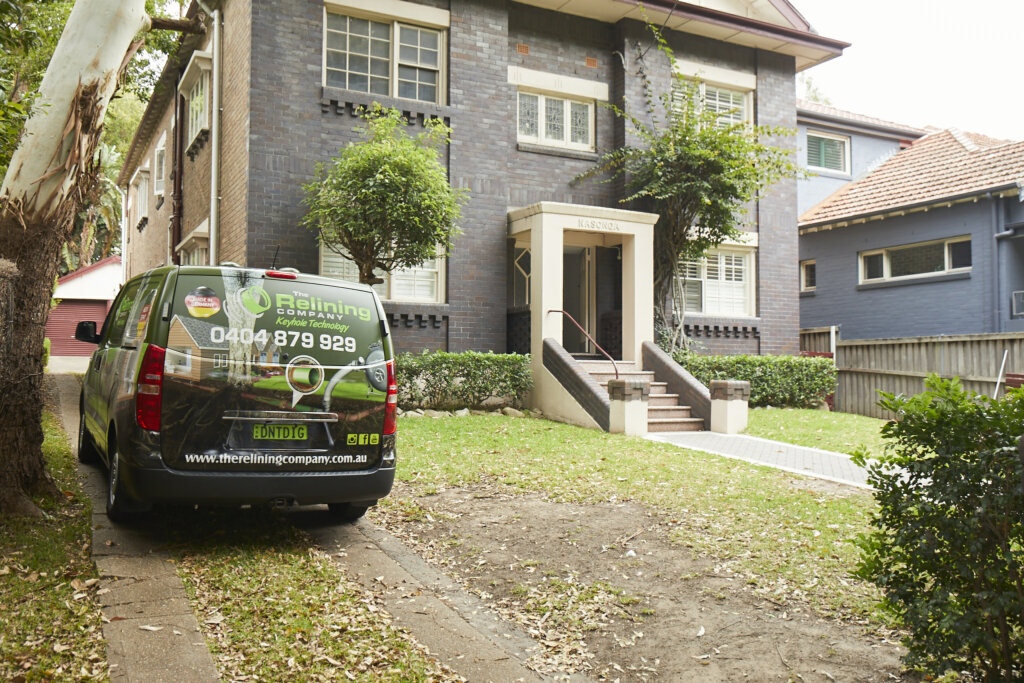
Immediate Steps to Take
So, your drains are gurgling, the shower’s backing up, and you’re starting to smell something suspicious. While calling in a professional is your best long-term move, there are a few things you can do in the meantime to help manage the situation and prevent further damage:
- Stop using affected fixtures. If water is backing up, turn off taps and avoid flushing to stop things from getting worse.
- Check and clear visible blockages. Hair clumps or food scraps near the surface can often be safely removed.
- Use a plunger. A few steady plunges on a slow-draining sink or toilet can sometimes dislodge a minor clog.
- Flush with hot water. Pour boiling water down the drain to help break down built-up grease or soap scum.
- Try a baking soda and vinegar mix. Pour ½ cup of baking soda followed by ½ cup of vinegar down the drain. Let it fizz for 10–15 minutes, then rinse with hot water.
- Run a cold water flush. Especially after using hot treatments, this can help push loosened debris along.
- Do a quick check of all drains. If multiple fixtures are acting up, the issue could be in the main sewer line.
- Avoid chemical drain cleaners. They’re tempting but often do more harm than good, corroding pipes and offering only a short-term fix.
If none of these tricks help, it’s time to call in a blocked drain specialist.
What Happens During a Drain Inspection?
A professional drain inspection involves inserting a CCTV camera into your pipes to visually assess their condition. This helps pinpoint blockages, cracks, root intrusions, or collapsed sections. In some cases, pressure testing may be used to detect hidden leaks or weaknesses. The process is quick, non-invasive, and provides a clear diagnosis so your plumber can recommend the most effective next step.
Repair Options if a Blocked Drain is Confirmed
Hydro-Jetting
One of the most effective ways to clear stubborn blockages, hydro-jetting blasts through your pipes using a high-pressure water stream to clear away grease, debris, tree roots, and scale build-up inside pipes. It’s fast, environmentally friendly, and perfect for restoring full flow without damaging the pipe. This is often the first line of attack (for non-structural issues).
Pipe Relining
This is our specialty. Trenchless pipe relining is a modern, trenchless solution that creates a new “pipe within a pipe” using a durable resin liner. It seals all leaks and reinforces the existing pipe, all without digging up your garden or driveway.
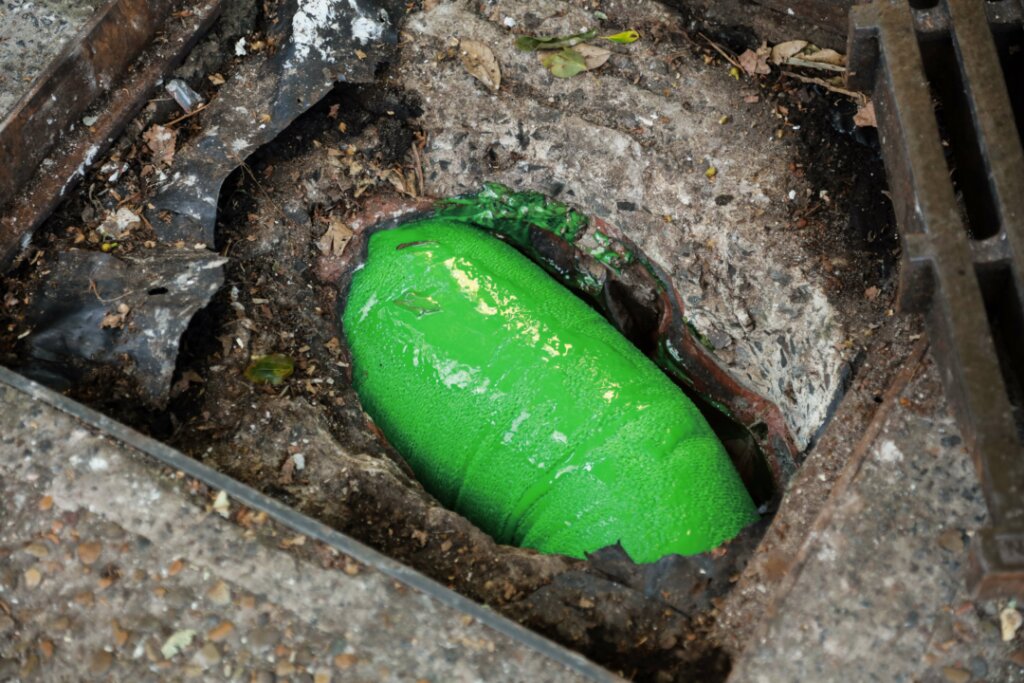
Excavation (if necessary)
In rare cases, we might see the need for traditional excavation. When there is a completely collapsed or severely misaligned pipe, digging up and replacing the damaged section of pipe will be necessary.
While it’s more invasive and time-consuming, it’s sometimes the only option when pipes are beyond repair or relining isn’t possible.
What’s Involved in Blocked Drain Repairs?
Blocked drain repairs typically happen in the following order:
- A camera inspection to identify the issue
- Clearing the blockage
- A tailored solution—whether it be relining the pipe or full pipe replacement
While plunging may provide short relief, permanent solutions like pipe relining ensure long-term results. At The Relining Company, we focus on lasting repairs with minimal disruption, using advanced tools and proven techniques to restore your drainage system properly.
Our Blocked Drain Services
The Relining Company offers a range of services for pipe blockages across the Sydney region:
- Inspections and diagnostics: Including inserting CCTV drain cameras down your pipes to find what’s causing significant blockages
- High-pressure water jet cleaning: Using hydro jets to blast away your blockages
- Pipe relining for damaged drains: Inserting a new pipe within a pipe without digging up your yard, driveway or garden beds
Is Relining the Solution for Your Drain Pipe Block?
Did you know that over 90% of blocked drains can be cleared and repaired using drain pipe relining? Many homeowners rush to call an emergency plumber, but if you’re noticing any of the issues mentioned above, there’s a good chance relining is the smarter solution.
How Is A Blocked Drain Pipe Relined, and How Much Does It Cost?
After a CCTV inspection and high-pressure water jetting, the liner is placed and cured, creating a tough, seamless pipe within the old one. It fixes cracks, leaks, and root intrusion, often in just a few hours, without digging up your property. The result? A faster, less disruptive, and more cost-effective alternative to full pipe replacement.
How to Prevent Future Blocked Drains
Now that your pipes are clear, how can you stop the problem from returning? A few simple habits go a long way:
- Avoid flushing foreign objects.
- Clean your drains regularly.
- Install strainers to catch debris.
- Install tree root barriers.
For long-term peace of mind, consider pipe relining—it seals your pipes from the inside to prevent cracks, intrusions, and repeat blockages.
When Should You Call a Professional?
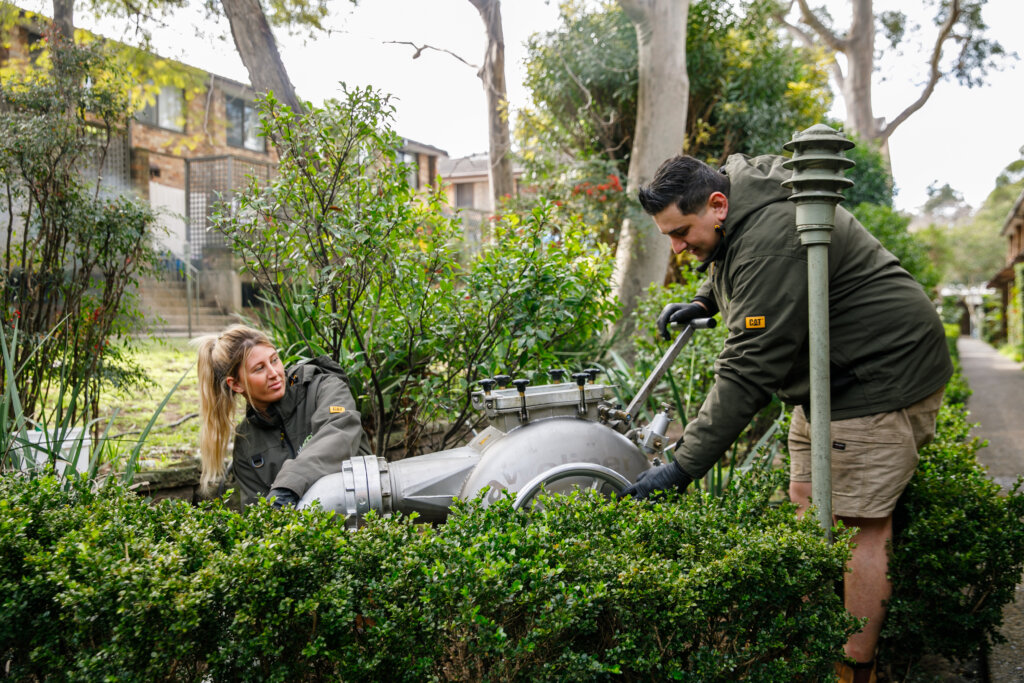
DIY can only go so far. If slow drains, foul smells, or gurgling sounds don’t go away, it’s time to call in the pros. A licensed plumber can carry out a CCTV inspection and advise on the best solution before things escalate.
Why Early Detection of Blocked Drains Matters
Blocked drains don’t fix themselves. Ignoring them will lead to property damage, costly repairs, and health hazards, so act early to avoid a bigger mess later.
Don’t Let a Blocked Drain Turn Into a Bigger Problem
To recap—slow drains, bad smells, or strange sounds are your early warnings. The sooner you act, the easier (and cheaper) the fix. Book a professional drain inspection with one of our friendly and professional technicians at The Relining Company today and stop a small problem from becoming a big one.
Frequently Asked Questions
How do you tell if your drains are blocked?
Signs of a blocked drain include slow drainage, gurgling sounds, bad smells or water backing up from the shower drain, sinks or toilets.
How often should drains be inspected?
For most homes, a professional drain blockage inspection every 1–2 years is recommended, especially in older properties.
What is the number one cause of clogged drains?
The most common culprit is a build-up of hair and soap scum, grease, food and other debris inside pipes. For sewer drain blockages it is flushing wet wipes.
How do I know if my plumbing drain is clogged?
If water is draining slowly or backing up, or if there are noises, a clog is likely. If there’s a foul smell, it’s usually a blocked sewer line.
Can I fix a blocked drain myself?
Minor blockages can sometimes be cleared with hot water or a plunger, but stubborn clogs need a professional, as does a blocked sewer line or plumbing emergency.
Are blocked drains covered by insurance?
It depends on your policy—some home insurance plans cover damage caused by blocked drains, but not routine maintenance.
How much does it cost to fix a blocked drain?
Costs vary based on the severity and repair method, but most repairs range from $200 to $1,000+.
How long does pipe relining last?
Pipe relining can last 30 to 50 years, making it a durable and long-term solution.
Will digging be required?
Not typically. Pipe relining is a trenchless, no-dig method that repairs pipes from the inside.
Back to Top